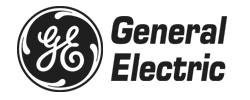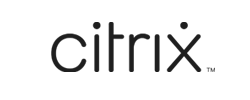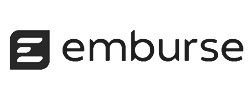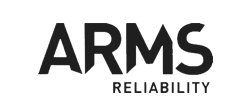Medical Equipment Sales Training
The proven Gap Selling methodology used by Fortune 500 healthcare companies to train medical equipment sales teams.
Trusted by Market Leaders:
Medical Equipment Sales is Different
Selling medical equipment in the healthcare industry involves navigating multi-layered decision processes, strict compliance standards, and lengthy approval cycles. Success depends on a clear understanding of buyer requirements and the ability to demonstrate clinical, financial, and operational impact.
Key Challenges
-
Multi-person buying committees that include clinical, administrative, supply chain, risk management, and procurement stakeholders.
-
Hospitals require thorough documentation supporting compliance, safety standards, and risk mitigation for every purchase.
-
Value Analysis Committees review new equipment, requiring clinical data, comparative research, and cost justification before accepting proposals.
-
Sales cycles can extend for months due to internal reviews, committee alignment, and changing budgets.
-
Understanding clinical workflows and patient safety risks is essential to prove that recommended equipment fits operational needs.
Gap Selling was designed to address these realities, teaching reps to diagnose buyer problems, quantify impacts, and effectively guide hospital and clinical stakeholders toward consensus and action.
Sell Smarter, Sell Better
Ready to Train Your Team Like Clinical Advisors?
We’ll show you how to align reps to what hospital buyers actually care about—clinical need, procedural impact, and long-term value.
A Diagnostic Approach: Selling the Way Healthcare Buyers Expect
Our medical equipment sales training centers on a proven, data-driven framework designed for healthcare markets.
Key Features:
-
The Problem Identification Chart (PIC) maps core issues and traces the underlying causes in hospital environments.
-
Buyer Input Data (BID) processes ensure every proposal is anchored by specific, verified information from clinical, administrative, and procurement stakeholders.
-
Training builds the skills to facilitate stakeholder alignment and translate regulatory language into clear value for each buyer.
-
Teams learn to use clinical evidence and workflow impact to structure compelling business cases.
Gap Selling emphasizes evidence gathering, problem mapping, and consensus-building as essential skills for competitive medical equipment sales, helping reps deliver solutions hospital committees can act on confidently.
Gap Selling Training for Medical Equipment Reps
This program equips your sales team with actionable Gap Selling skills tailored for complex healthcare buyers and hospital accounts. All training is guided by your custom-built Problem Identification Chart (PIC), developed in partnership with your leadership.
What Your Reps Learn
-
Effective Discovery: Asking targeted questions to reveal genuine clinical, operational, and financial challenges within hospital departments.
-
Problem Diagnosis: Diagnosing root causes, problems, and impacts so reps connect solutions to what matters most for stakeholders.
-
Value Mapping: Aligning sales messaging and proposals to the hospital’s highest-priority problems, with clear evidence, numbers, and workflow impact.
-
Buyer Input Data (BID): Using verified buyer information in every conversation from initial outreach to final proposal.
-
Objection Handling & Stakeholder Alignment: Engaging clinicians, administrators, and procurement with insights relevant to each, navigating committee-driven decisions.
-
Real-World Application: Practice scenarios, hospital account role-plays, and personalized AI coaching.
Training Format
-
Fast-paced Gap Selling workshops, delivered live (virtual or on-site)
-
Tools and guides for reps to prepare, run, and recap healthcare sales conversations
-
Ongoing coaching and deal inspection using the PIC as a reference
Outcomes
Reps walk away ready to run professional, problem-centric conversations with hospital buyers, apply the PIC to every deal, and increase close rates in the competitive healthcare arena.
The Impact of Problem-Centric Sales Training
After training, medical equipment sales reps report faster deal cycles, stronger stakeholder engagement, and more closed accounts.
Results:
- Reduced sales cycle length
- Higher close rates with clinical committees and procurement groups
- More consistent engagement with hospital decision makers
- Better quality of discovery and qualification conversations
- Increased credibility with Value Analysis Committees
The Gap Selling approach delivers lasting change for medical equipment sales teams, moving reps from product pitches to focused, problem-driven conversations proven to win in healthcare environments.
Case Studies
Ryan Cannady, CRO of John Deer Employees Credit Union Increased his bank membership
Ryan was tasked with increasing the number of clients who used Deer Employee Credit Union as their primary banking institution. His team was struggling at helping members see the value of the relationship. Before Gap Selling sales training, only 18% of their 3000 members made DECU their primary financial institution. After Gap Selling, they grew that number to 40% of 7,000 members.
%
Increase in Primary Institution
%
Increase in Membership
%
Shorter Sales Cycle Length
%
Positive Culture Change
trusted by:
Struggling With Declining Revenue or Falling Win Rates?
We’ll help you uncover the hidden execution issues driving poor results before the next quarter slips away.

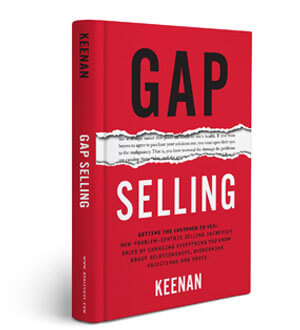
A Little Insight For Ya…
Here are a few tools to get you on the right path forward.
How Buyers Want to be Sold
This survey report shares direct input from buyers on how they prefer to be approached, engaged, and sold to. It highlights what buyers pay attention to, what gets ignored, and the reasons they move forward or walk away. You’ll see clear trends in messaging, outreach, and rep behavior that influence buying decisions.
Use this report to align your sales motion with how real buyers actually evaluate sellers.
Deal Review Framework
This resource outlines a nine-point deal review process anchored in buyer input. It helps sales leaders assess deal quality based on discovery, qualification, decision process, buying timeline, and urgency. Each criterion is designed to surface execution gaps and guide stronger coaching conversations.
Use it to bring structure, consistency, and focus to every deal review session.
Revenue S.P.E.E.D.™ Model Assessment
This self-assessment gives sales leaders a structured way to evaluate their team’s ability to execute. It breaks down your sales organization across three critical layers: Skills, Opportunity, and Forecasting. Each section contains targeted questions covering everything from methodology and coaching to pipeline visibility and forecast reliability.
Use this tool to inspect how well your systems support rep execution, deal quality, and leadership oversight. The assessment highlights gaps that stall performance and gives you a starting point to prioritize what needs to change first.
